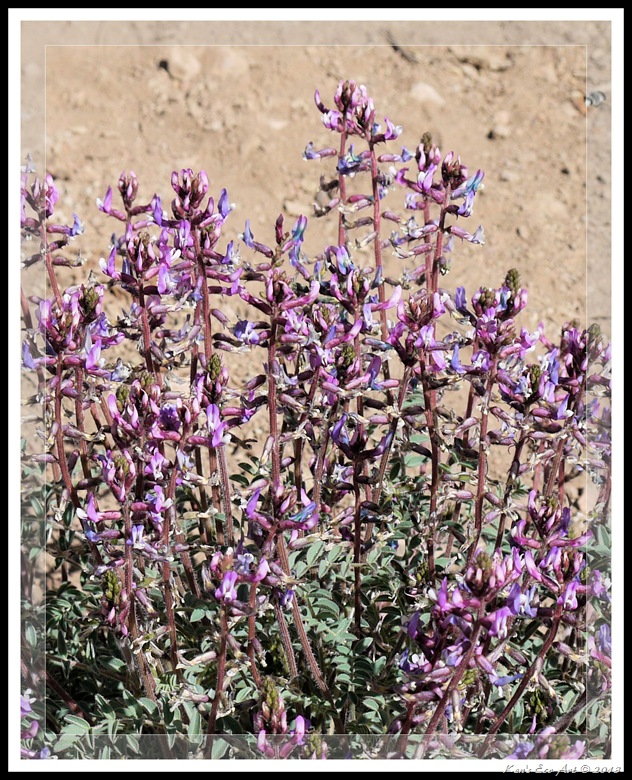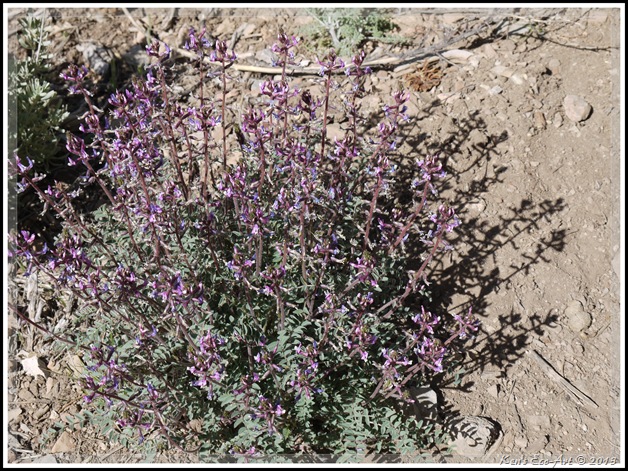Description: Desert Sage (Salvia dorrii), a.k.a. Purple Sage,Tobacco sage, Dorr's sage, Mint sage or Desert Purple Sage, is a herbaceous perennial in the family Lamiaceae. It is native to mountain areas in the western United States and northwestern Arizona, found mainly in the Great Basin Range habitat and southward to the Mojave Desert, growing in dry, well draining soils. It needs perfect drainage (native on sand, volcanic rock to decomposed granite) and very little water after it is established. This beautiful subshrub grows to 1-3 feet in height and width high with gray foliage and deep, deep blue flowers and purple bracts. The flower bracts are broad, about 0.4 inches wide and are reddish purple. Flowers are pale blue to purple, 0.4 to 0.5 inches long, and occur in a series of showy, terminal clusters. The corolla is two-lipped, with the three-lobed bottom lip longer than the flat, two-lobed upper lip. The two stamens extend beyond the corolla. The style is narrow, long and two-parted. The grey-green leaves are narrow and lanceolate, are tapered at the base and rounded at the tip, and have a smooth and round margin. They are generally basal, and about 1-3 cm long. They have an intense but pleasant, mildly intoxicating minty aroma, with the scent released when the foliage is handled or crushed. The inflorescence is made up of spike-like clusters of numerous purple flowers that are bilateral. The flowers remain on the plants after being pollinated, with the desiccated flowers remaining for some weeks or months after flowering. They occur on dry slopes in areas with sandy soils in drainage washes and banks of arroyos throughout the Mountain West areas that experience intermittent and very infrequent water throughout the spring growing season, early summer (May through July).
|


